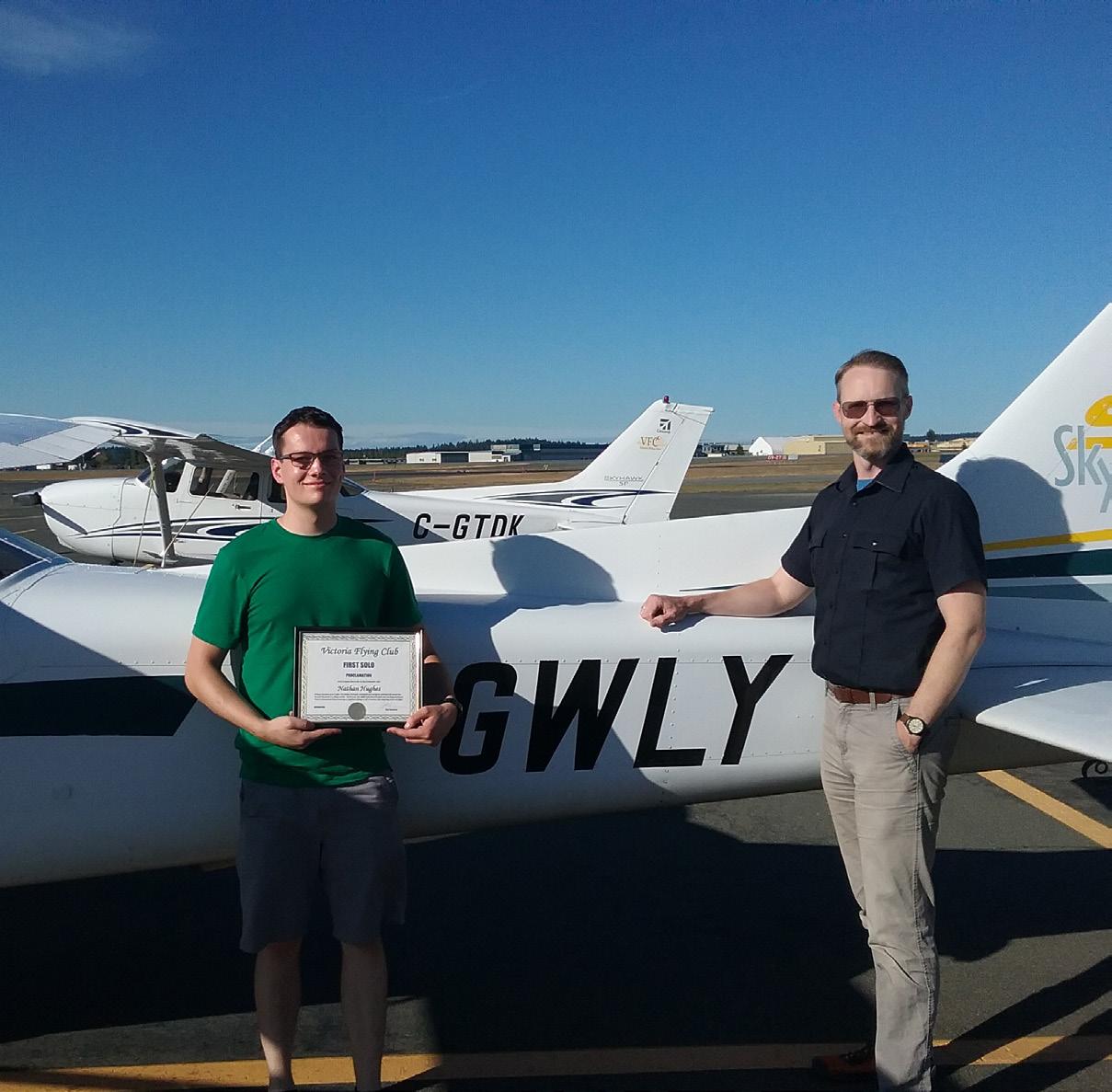
2 minute read
COPA Quadrant
COPA Flight 6 copaflight6.blogspot.ca
The COPA Flight 6 October meeting was an on-site tour to see a Scottish Aviation Bulldog. This unique plane was acquired by local aviation enthusiast Mark Reimer. Mark discovered the plane sitting in a hangar for over 10 years on the north side of YYJ. After convincing the original owner to part with it, Mark acquired the aircraft approximately one year ago. Mark trends towards brightly painted airplanes as his previous plane was a bright orange Grumman Yankee. As shown in the pictures, the Scottish Aviation Bulldog is bright yellow on black, no standard white with coloured trim here.
Advertisement
The Scottish Aviation Bulldog is a British two-seat, side-by-side (with optional third seat) training aircraft designed by Beagle Aircraft as the B.125 Bulldog.
The prototype Bulldog flew on 19 May 1969 at Shoreham Airport in West Sussex England. The first order for the type was for 78 from the Swedish Air Board. Before any production aircraft were built, Beagle Aircraft ceased trading and the production rights for the aircraft, with the Swedish order, were taken

over by Scottish Aviation (Bulldog) Limited. All subsequent aircraft were built at Prestwick Airport located outside Glasgow Scotland by Scottish Aviation, and later by British Aerospace.
Altogether, 328 Bulldogs were produced. The largest customer was the Royal Air Force, which placed an order for 130 Bulldogs in 1972, entering service as the Bulldog T.1. It was used by the Royal Air Force as a basic trainer, in particular as the standard aircraft of the University Air Squadrons and, later, Air Experience Flights, providing flying training. The aircraft was also used by the Royal Navy for Elementary Flying Training (EFT) at RAF Topcliffe.
The RAF sold off its remaining Bulldog trainers in 2001 as general aviation light aircraft for a low price. Model 125A was built for export for the Royal Jordanian Air Force. A total of nine were built.
Mark learned quickly that he was going to need outside help to make the aircraft once again airworthy. Mark enlisted the help of a retired Transport Canada inspector who was extremely helpful in guiding Mark

through the process. Ex-Military warbirds can be more problematic to gain a C of R (Certificate of Registration). Mark also commented that "COPA's (Canadian Owners & Pilots Association) National headquarters office provided a wealth of information also regarding military aircraft".
C-FHEE cruises at 120 knots at 75% BHP powered by a Lycoming AEIO360 200HP 4 cylinder horizontally opposed engine, burning 10 gph. As the airplane was built for military training it is stressed for aerobatics. It has a plus 6 minus 4 g limit and can remain inverted for about 15 seconds as the engine has a inverted oil system but the fuel system does not.
The plane was optionally equipped with Mantra rockets or carried 30 Calibre machine guns. The plane was originally painted with Jordanian Air Force colours (camouflage) but has since been converted to what is called University colours.
As of this article, Mark has logged about 10 hours of flight time but once everything is completed I'm sure you will be seeing a lot more of C-FHEE in the skys above YYJ.





